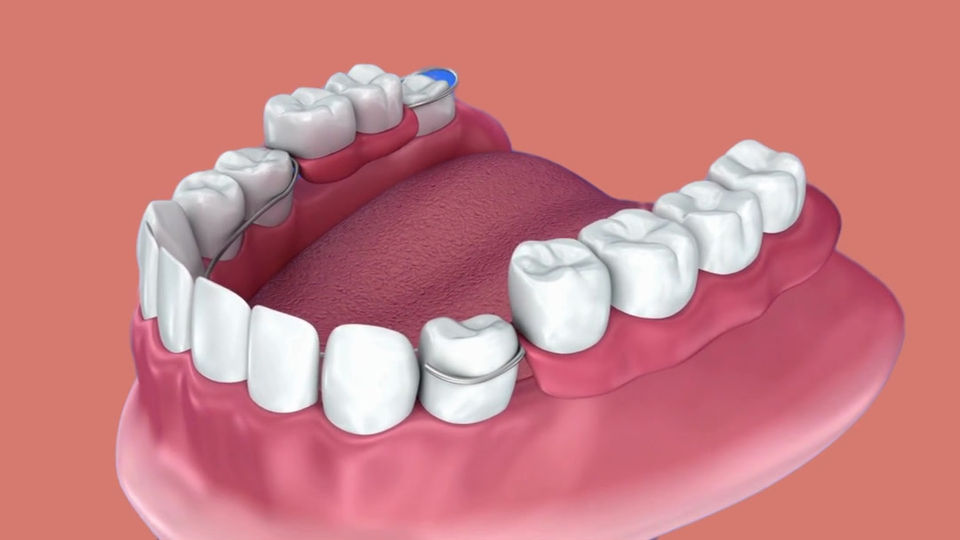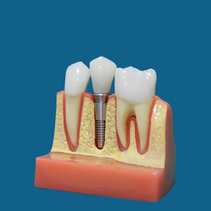DENTAL IMPLANTS
Dental implants are essential because they prevent jawbone loss by providing the necessary chewing stimulation, restore normal eating and speaking functions, maintain facial structure, and offer a durable, long-lasting solution.
Dental implants are artificial tooth roots made from titanium, that are surgically placed into the jawbone to support a replacement tooth or bridge. They provide a strong foundation for fixed (permanent) or removable replacement teeth that are made to match your natural teeth.
Health Impacts of Tooth Loss
When natural teeth are missing, the jaw bone, especially the alveolar bone, no longer gets the stimulation it needs from chewing and biting. This leads to resorption, where the bone breaks down. Without replacing a missing tooth, up to 25% of the jawbone structure can be lost within the first year.
Dental implants are most effectively placed immediately after tooth extractions because bone replacement becomes harder over time due to deterioration. Most bone loss happens within the first eighteen months and continues gradually throughout life.
REPLACEMENT OPTIONS
You can select from a number of different options to replace your missing teeth – from temporary to long-lasting solutions.





DENTAL IMPLANT TREATMENT
Frequently asked questions
MISSING ALL TEETH
Consider implant-supported replacements for lower dentures if traditional ones pose challenges. Similar options exist for upper teeth, but more implants may be needed due to softer upper jaw bone. Sufficient implants may allow avoiding palate coverage, enhancing taste and natural feel.
Lower Teeth Replacement: Ball Attachment Denture
The recommended solution is to place two implants in your lower jaw to secure the denture, improving stability during chewing. Some movement may still occur, especially if food particles get trapped, causing sore spots. Regular denture adjustments will still be necessary.
Lower Teeth Replacement: Bar Attachment Denture
Place four to six implants in your lower jaw to support a bar attachment denture. After healing, a custom bar connects the implants, allowing the denture to snap into place with retention clips. This "overdenture" offers increased stability and is removable for easy maintenance.
Lower Teeth Replacement: Screw Attachment Denture
Place five or more implants in your jaw to attach a permanent denture. Secured by screws or clasps, this denture doesn't touch the gums, allowing for easy cleaning without removal. It replaces all missing lower teeth and stays in place except during maintenance visits.
Upper Teeth Replacement: Screw Attachment Denture
With fewer implants, you might not need a full denture covering the roof of your mouth, enhancing taste and temperature sensation. This more natural-feeling denture remains removable for easy cleaning.
Full Dental Implant Replacement
The final option mimics natural teeth by replacing each one individually with crowns on eight or more implants. This may involve sinus grafting to restore bone height and strength. While the most comprehensive and expensive, your choice depends on your jawbone's size and shape.
CALL US TODAY!
We prioritize your comfort and safety throughout every step of your experience. We strive to exceed your expectations at every visit, ensuring you receive the highest quality of care tailored to your individual needs. Trust our team to restore your smile with precision, expertise, and a genuine commitment to your oral health journey.

Implant
Dr. Gallagher has magical healing hands. He helped me 9 years ago and now as well - had implant surgery last week. I was up on my feet the day after the procedure. No swelling. Walked 4 miles at Lady Byrd lake 2 days after the surgery. His staff is professional and attentive. Nancy, Diana, Kristy, thank you for your help. Dr. Gallagher is the best in town!













